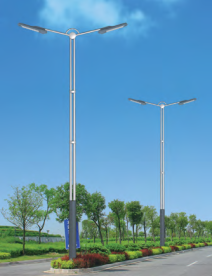Introduction to "Assisted Lighting in Corners"
Compared to daily configurations such as ESP, the popularity of corner assisted lighting is not high enough, making it a bit unfamiliar to many consumers. Therefore, although it is included in the configuration list of some mid to high-end models, consumers may not be concerned about it. However, those who have experienced "assisted lighting in bends" know that it is a proper nighttime turning tool.
Everyone knows the physical common sense of 'light travels in a straight line', and the headlights are no exception. So when driving at night, once the car turns, there will be a large blind spot on the inside of the curve. Especially on narrow sections of roads similar to those in residential areas, on the one hand, the street lights are dim, and on the other hand, the direct light from the headlights can cause insufficient road lighting. The existence of "bend assisted lighting" is equivalent to having a "turning car light", making the original blind spot clear and visible, greatly improving the safety of turning at night.
There are currently two commonly used 'bend assist lighting systems', one is dynamic bend assist lighting, which is mostly referred to as the Adaptive Front Lighting System (AFS), which refers to the front headlight steering function. It can automatically adjust the irradiation center of the Low beam according to the driving speed, steering angle, etc., so that the headlights always change with the turning angle of the vehicle, so as to keep the lights consistent with the driving direction. The system is achieved by installing a motion mechanism inside the lamp group to drive the rotation of the light bulb and cup. The timing and amplitude of the movement are controlled by the driving computer. Generally, the vehicle can only be turned on when the speed is above 20km/h.
Working principle of static bending auxiliary lighting
Another more common form is static bending auxiliary lighting, which has two forms: one is to install a bulb inside the headlights, and the other is to rely on existing lights (fog lights, side lights, etc.) for auxiliary lighting. The truth is the same, as long as the steering wheel reaches a certain angle, it can automatically turn on the corresponding direction's light bulbs or fog lights (side lights) to provide auxiliary lighting. When driving at a speed below 40km/h at night and turning in place, static auxiliary lighting can illuminate a small area on the inside of the curve, allowing the driver to see the side of the car.
The use of 'auxiliary lighting for bends'
At present, the popularity of "auxiliary lighting for bends" is not high, and some mid to high-end models are only optional. On the one hand, manufacturers are considering costs; On the other hand, manufacturers are more willing to create articles in areas where consumers can "see" and increase "sensory value". "Invisible configurations" such as "bend assist lighting" are clearly not considered by manufacturers.




